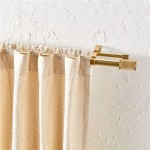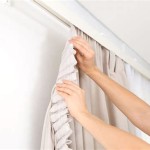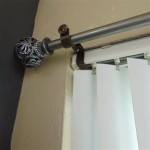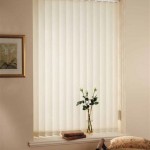Heavy Duty Outdoor Curtain Weights: Ensuring Stability and Aesthetics
Outdoor curtains offer a versatile solution for enhancing outdoor living spaces by providing privacy, shade, and protection from the elements. However, the effectiveness of these curtains can be significantly compromised by wind, which can cause them to billow, flap, and potentially become damaged. Heavy-duty outdoor curtain weights are designed to mitigate these issues, ensuring that curtains remain stable, aesthetically pleasing, and functional even in challenging weather conditions. This article examines the importance of heavy-duty outdoor curtain weights, their various types, factors to consider when selecting them, and best practices for installation.
Understanding the Need for Heavy-Duty Curtain Weights
The primary function of outdoor curtain weights is to counteract the effects of wind. Without sufficient weight, outdoor curtains become susceptible to being lifted and blown around, which can be noisy and distracting. Furthermore, continuous flapping can lead to premature wear and tear, tearing, and even complete detachment from the curtain rod or track. Heavy-duty weights provide the necessary downward force to keep the curtains anchored, minimizing movement and extending their lifespan. This stability also enhances the overall aesthetic appeal of the outdoor space, preventing the curtains from looking unkempt or disheveled.
Beyond wind resistance, curtain weights also contribute to the curtain's drape. Properly weighted curtains hang more smoothly and uniformly, creating a more elegant and polished look. This is particularly important for formal outdoor settings or areas where visual appeal is a priority. The weights help to eliminate unsightly wrinkles and folds, ensuring that the curtains maintain their intended shape and appearance. This is especially useful when combined with heavier curtain fabrics.
Moreover, heavy-duty curtain weights can improve the energy efficiency of outdoor spaces. By preventing curtains from billowing and creating gaps, they help to block sunlight and reduce heat gain during the summer months. This can lead to a more comfortable outdoor environment and potentially lower energy costs if the outdoor space is adjacent to an indoor living area. Conversely, in cooler weather, the weights help to keep the curtains closed, providing an extra layer of insulation and preventing drafts.
Types of Heavy-Duty Outdoor Curtain Weights
A variety of heavy-duty outdoor curtain weights are available, each designed to suit different types of curtains, installation methods, and aesthetic preferences. These weights differ in material, shape, size, and attachment mechanisms. Understanding the characteristics of each type is crucial for selecting the most appropriate option for a specific outdoor setting.
Clip-On Weights: These weights are typically made of metal, such as stainless steel or lead, and feature a clip that attaches directly to the bottom hem of the curtain. They are easy to install and remove, making them a convenient option for curtains that need to be frequently adjusted or washed. Clip-on weights are available in various sizes and weights, allowing users to customize the amount of weight added to each curtain panel. The clip mechanism should be sturdy and rust-resistant to withstand outdoor conditions. These are a popular choice for lighter fabrics and situations where a minimal visual impact is desired.
Sew-In Weights: These weights are designed to be sewn into the bottom hem of the curtain. They are typically small, discreet, and made of materials like lead or steel encased in fabric or plastic. Sew-in weights provide a more permanent and concealed solution compared to clip-on weights. They are ideal for curtains where a clean, seamless look is desired. The weight is evenly distributed along the hem, providing consistent stability. Professional installation may be required to ensure that the weights are properly positioned and secured. This option is particularly well-suited for custom-made or high-end outdoor curtains.
Grommet Weights: These weights are designed to be integrated into the grommets at the bottom of the curtain. They typically consist of a metal weight that fits snugly into the grommet, providing a secure and aesthetically pleasing solution. Grommet weights are available in different sizes and finishes to match the style of the curtain and the outdoor space. They are particularly effective for curtains with a grommet top, as they maintain a consistent look throughout the entire curtain panel. Installation involves simply inserting the weights into the grommets, making it a quick and easy process.
Chain Weights: These weights consist of a metal chain, often made of stainless steel or brass, that is sewn into the bottom hem of the curtain. Chain weights provide a continuous and even distribution of weight along the entire hem, ensuring maximum stability. They are particularly effective for heavy or long curtains that require significant downward force. Chain weights are typically encased in fabric or plastic to protect the curtain from damage and prevent the chain from rusting. Installation requires sewing the chain into the hem, which may require professional assistance. This option is often used in commercial settings or for curtains that are frequently exposed to strong winds.
Magnetic Weights: These weights utilize magnets to attach to each other, sandwiching the curtain hem between them. They offer a simple and tool-free installation. However, they are best suited for lighter fabrics and situations where the wind conditions are not too severe. The strength of the magnets determines their effectiveness, so choosing weights with strong magnets is crucial. They are easily removable for cleaning or adjustments.
Factors to Consider When Selecting Heavy-Duty Outdoor Curtain Weights
Choosing the right heavy-duty outdoor curtain weights involves considering several factors, including the weight of the curtain fabric, the wind conditions in the area, the desired aesthetic, and the ease of installation. Failing to account for these factors can result in inadequate performance or damage to the curtains.
Curtain Fabric Weight: The heavier the curtain fabric, the more weight is required to keep it stable. Lightweight fabrics, such as sheer or voile, may only require small, discreet weights. Heavier fabrics, such as canvas or blackout materials, will need more substantial weights to prevent them from billowing. It is essential to assess the fabric weight and choose weights accordingly. A general guideline is to start with heavier weights for heavier fabrics and adjust as needed based on the wind conditions. Trial and error may be necessary to determine the optimal weight for each curtain panel.
Wind Conditions: The amount of wind exposure in the area is a critical factor in determining the type and weight of curtain weights needed. Areas that experience frequent strong winds will require heavier and more secure weights compared to areas with mild breezes. Consider the typical wind speed and direction in the outdoor space and choose weights that can effectively counteract these forces. In particularly windy areas, it may be necessary to use a combination of different types of weights, such as clip-on weights in addition to sewn-in weights, to provide extra stability.
Aesthetic Considerations: The appearance of the curtain weights should complement the style of the curtains and the overall aesthetic of the outdoor space. Choose weights that are discreet and blend seamlessly with the curtain fabric or that add a decorative touch, depending on the desired look. Consider the color, finish, and shape of the weights and how they will impact the overall visual appeal of the curtains. For a minimalist look, opt for sew-in weights or discreet clip-on weights. For a more decorative look, choose grommet weights or chain weights with an attractive finish.
Installation and Maintenance: The ease of installation and maintenance is another important factor to consider. Clip-on weights are the easiest to install and remove, while sew-in weights require more effort. Choose weights that can be easily cleaned and maintained to ensure that they remain in good condition over time. Stainless steel and brass are durable and rust-resistant materials that are well-suited for outdoor use. Regularly inspect the weights for any signs of damage or corrosion and replace them as needed. Also, consider whether professional installation is necessary, particularly for sew-in or chain weights.
Material Durability: Outdoor conditions can be harsh, so the material of the curtain weights should be durable and weather-resistant. Stainless steel, brass, and lead are common choices, as they can withstand exposure to moisture, sunlight, and temperature fluctuations. Ensure that the weights are treated with a protective coating to prevent rust or corrosion. The material should also be non-toxic and safe for use around children and pets.
Cost: The cost of curtain weights can vary depending on the type, material, and quantity needed. Consider the budget and choose weights that offer the best value for the price. While it may be tempting to opt for cheaper options, investing in high-quality, durable weights will ultimately save money in the long run by preventing damage to the curtains and reducing the need for frequent replacements. Compare prices from different retailers and read reviews to ensure that the chosen weights are of good quality and worth the investment.
Best Practices for Installing and Maintaining Curtain Weights
Proper installation and maintenance are essential for ensuring that heavy-duty outdoor curtain weights perform effectively and last for a long time. Following these best practices will help to maximize the benefits of the weights and extend the lifespan of the curtains.
Even Distribution: Distribute the weights evenly along the bottom hem of the curtain to ensure consistent stability. For clip-on weights, space them out at regular intervals, typically every 12-18 inches. For sew-in weights, position them strategically to provide balanced support. For chain weights, ensure that the chain is evenly distributed throughout the hem. Uneven distribution can lead to sagging or uneven draping, which can compromise the appearance and functionality of the curtains.
Secure Attachment: Make sure that the weights are securely attached to the curtains to prevent them from falling off. For clip-on weights, check that the clips are tightly fastened and that they are not slipping or loosening. For sew-in weights, ensure that the stitching is strong and secure. For grommet weights, verify that the weights are properly inserted into the grommets and that they are not loose. Regularly inspect the attachments and make any necessary repairs to prevent the weights from detaching.
Regular Inspection: Periodically inspect the curtain weights for any signs of damage or wear. Check for rust, corrosion, or loose attachments. Replace any weights that are damaged or no longer functioning properly. Regular inspection will help to identify potential problems early on and prevent them from escalating into more serious issues. This is especially important in areas with harsh weather conditions.
Cleaning and Maintenance: Clean the curtain weights regularly to remove dirt, dust, and debris. Use a mild soap and water solution and a soft cloth to wipe down the weights. Avoid using harsh chemicals or abrasive cleaners, as these can damage the finish or material. For rust-resistant materials like stainless steel, a simple wipe down is usually sufficient. For materials that are prone to corrosion, consider applying a protective coating to prevent rust. Keep the weights dry to prevent moisture damage. Regularly cleaning and maintaining the weights will help to keep them looking their best and ensure that they continue to function effectively.
Adjustments as Needed: Monitor the performance of the curtain weights and make adjustments as needed based on the wind conditions and the weight of the curtains. If the curtains are still billowing or flapping excessively, add more weights or switch to a heavier type of weight. If the curtains are sagging or drooping, remove some of the weights. Regularly adjusting the weights will help to optimize their performance and ensure that the curtains remain stable and aesthetically pleasing.

Windproof Outdoor Curtain Accessories Weight Temu

Windproof Outdoor Curtain Accessories Weight Temu

Rkzdsr Magnetic Shower Curtain Weights Heavy Duty Solution For Securing Liners And Outdoor Curtains Also Ideal As Flag

Rkzdsr Magnetic Shower Curtain Weights Heavy Duty Solution For Securing Liners And Outdoor Curtains Also Ideal As Flag

Windproof Outdoor Curtain Accessories Weight Temu Belgium

Pro Space 50 W X 96 L Water Wind Resistant Outdoor Curtain For Patio Porch Gazebo Cabana Greyish White Otcg5096gw The Home

Weights For Gazebo Curtains 18pcs Plastic Wrapped Magnetic Drapery Waterproof Heavy Duty Curtain Magnets Flag Wind Shower Outside C Outdoor

Windproof Outdoor Curtain Accessories Weight Temu

Zynery 10 Pcs Magnetic Curtain Weights Drapery Heavy Duty Bottom No Sew Outdoor Liner Magnets For Tablecloth

How To Keep Outdoor Curtains From Blowing In The Wind Proline Range Hoods








